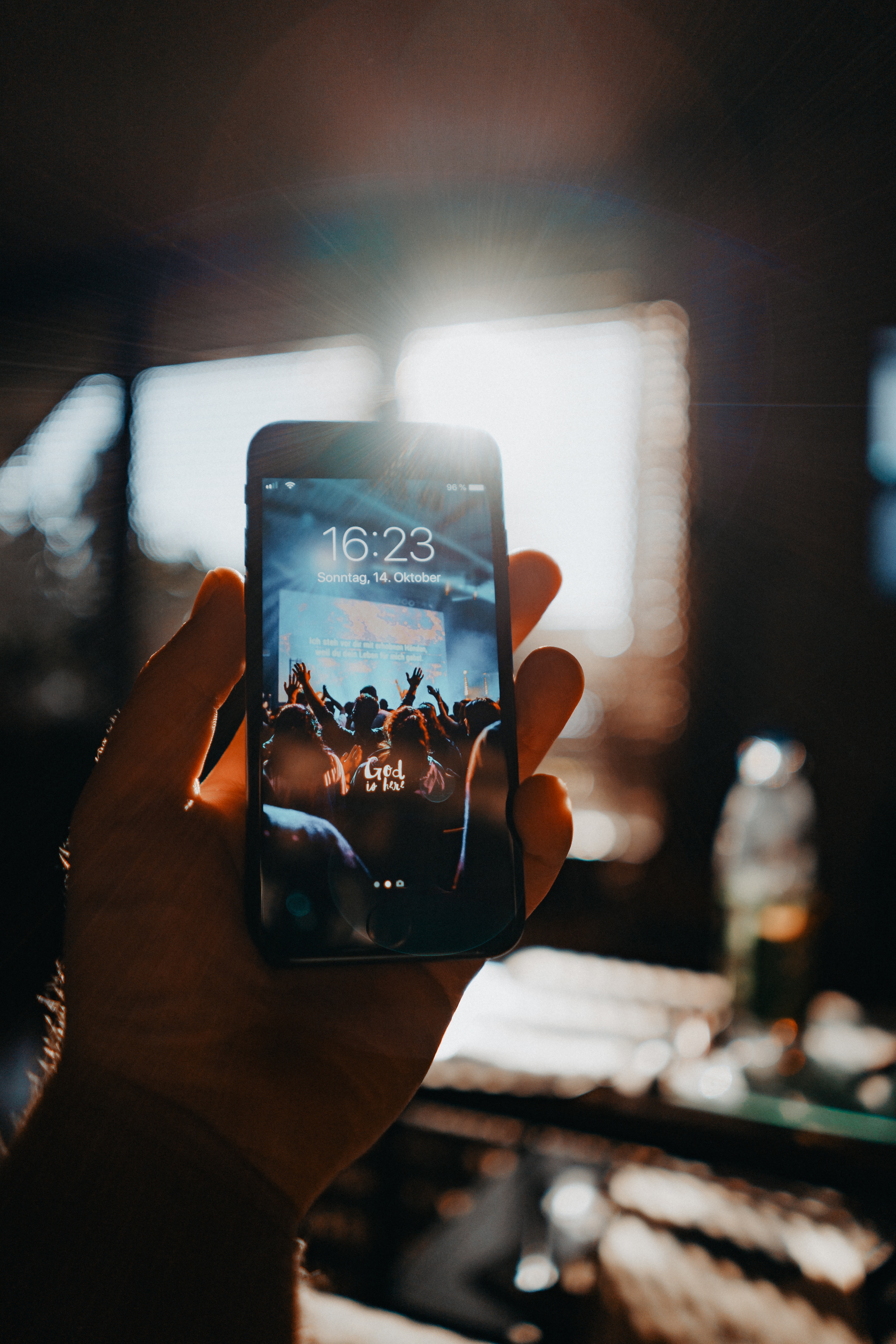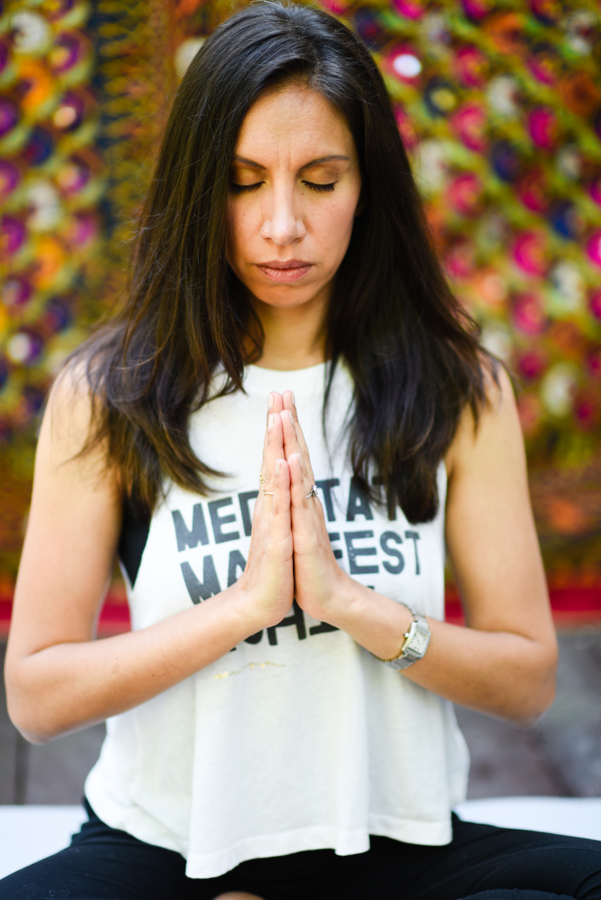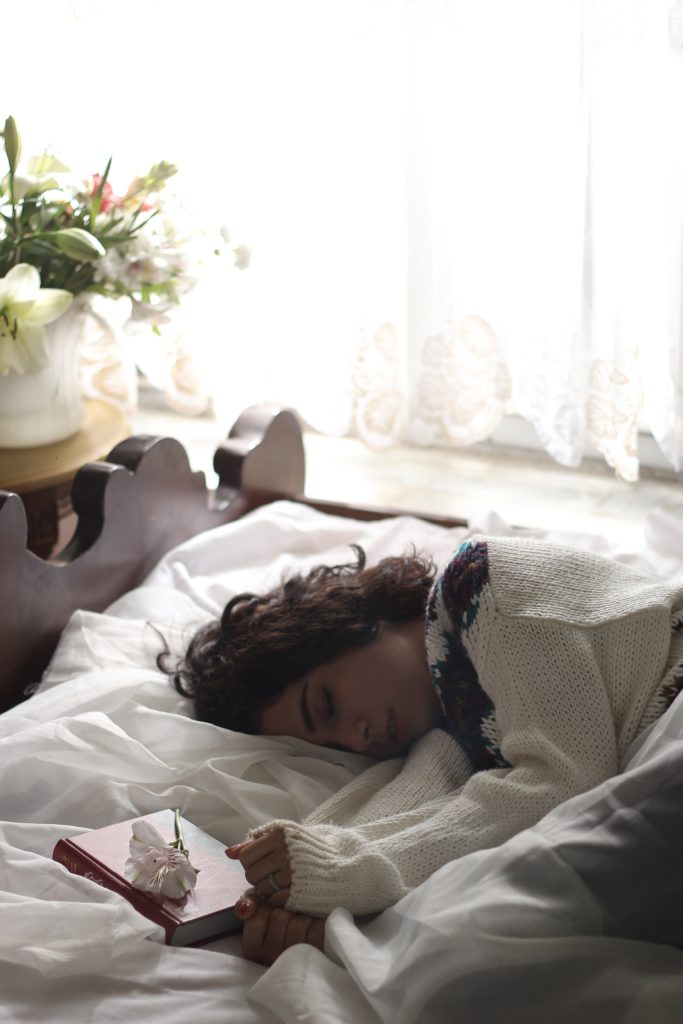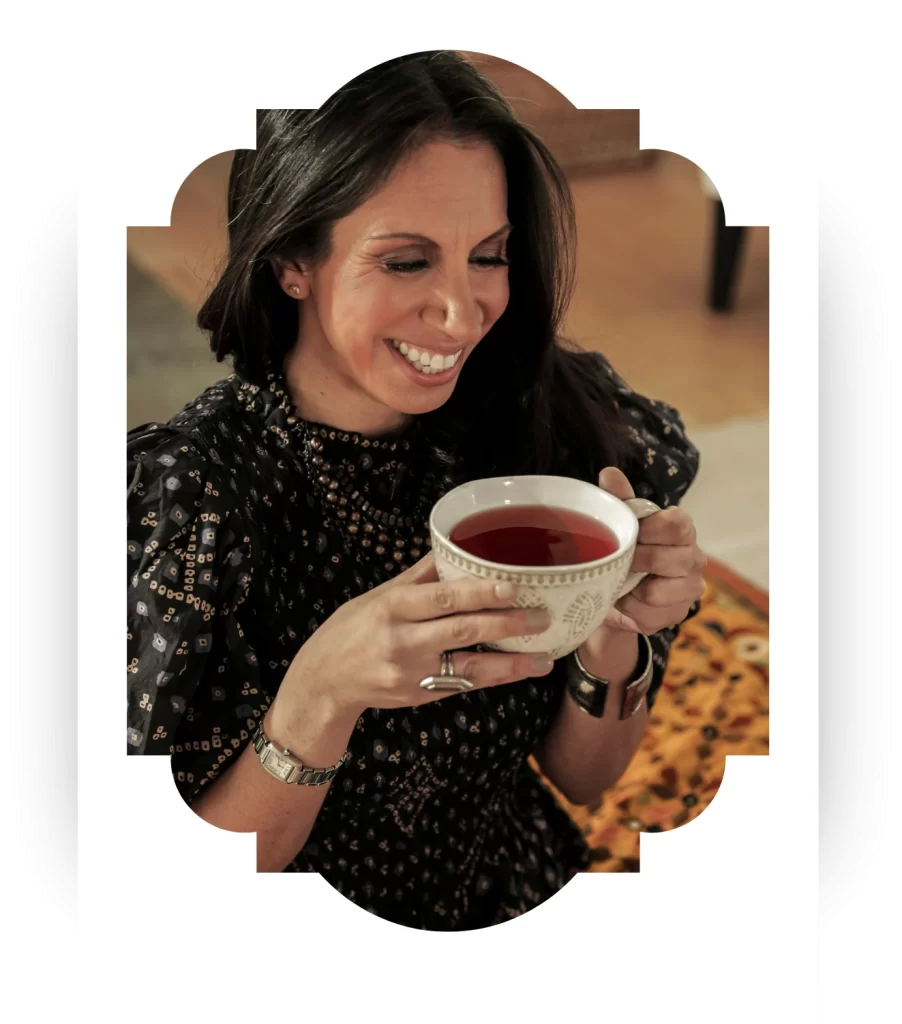As someone who’s always been pretty type A and feels like she always has a lot going on upstairs, if you will, falling asleep used to be super difficult for me. It was always a struggle.
I’d spend hours tossing and turning, practically seeing the clock at what felt like every hour. The more I’d try to fall asleep, the more frustrated I’d get and the more I wouldn’t be able to sleep. My mind would keep going, remembering random things and then next thing I knew, I’d have a second wind. Game over.
Come the next morning, when it’d be time to get up, I’d feel like I got hit by a truck and feel like I was dragging. That then would start the cycle of caffeine, bad food choices, overall bad decisions and let’s be honest, often a bad attitude too. No bueno.
But wait. Aside from poor sleep making us feel crumby, poor sleep literally causes weight gain, high blood pressure, risk of diabetes, risk of heart disease, weakened immunity, poor memory issues, and more.

After learning the hard way how badly poor sleep was impacting my health and weight, I spent years figuring out every possible way to get my sleep game on point!
The most important and foundational aspect of sleep hygiene is setting up bedtime routines and rituals that trigger your mind and body to relax and fall asleep.
1. Set a Bedtime
Guys, there’s a reason why this term exists. It’s not just for kiddos. It’s a proven fact that having a consistent bedtime is critical to balance homeostasis in your body.
A person’s sleep-wake cycle (deep sleep and REM sleep) is dictated by their circadian rhythm. This is an internal biological clock that regulates various body processes over a 24-hour period.
Light, time, and melatonin are the main factors that impact the circadian rhythm. Therefore, inconsistent bedtimes may disrupt one’s circadian rhythm, which may lead to weight gain and metabolic disturbances.
The more you can get your body into a following a similar sleep-wake cycle, the better your body is able to sync up with this and get accustomed to it being your body’s natural rhythm. It becomes intuitive to your body, and feels harmonious, versus feeling the constant battle of trying to push your body to fall asleep or wake up, when it feels like doing the opposite, because it’s lacking an understanding of it’s schedule/rhythm.
I use the iphone’s bedtime function to set my bedtime. It alerts me 30 minutes before it’s my sleep bedtime, giving me ample notice to put my phone away if it’s not already and get into bed for my bedtime rituals.
What I also love about the iphone’s bedtime function, is that it shows you, based on when you plan to wake, how much sleep you’ll be getting and the “alarm” that goes off in the morning is a harmonious, gentle sound, versus a jarring one, like typical alarm clocks.
2. Digital Bedtime

Don’t roll your eyes, people. it’s the truth. Turn those devices and screens off 1 hour before bedtime! Don’t even think about it. Just it down, put them in your drawers, whatever you have to do.
The brain creates the hormone melatonin that regulates our sleep and awake cycles. Too much blue light, as emitted from video screens, at night can affect melatonin production and fool the brain into thinking the body isn’t ready for sleep.
Also, the blue lights the screens emit, signals the brain to think it’s still daytime despite the darkness outside, thus screwing up your circadian rhythm that we’re trying to regulate.
In addition, if we’re engaging on social media or reading something juicy, our reward pathway and feel good neurotransmitter gets released exciting our brains, versus relaxing them.
Basically, the screens literally throw off everything we’re working so hard to relax and settle.
Doing anything to reduce the exposure to the blue light will help support your body’s circadian rhythm in staying in it’s natural flow.
So I bet you’re thinking, “So, wtf do you want me to do for this hour or so that I’m laying in bed like a donkey?” Read on, Mama!
3. End of day Reflections
Take out your journal and reflect on your day.
Ask yourself, what went well today? What you’re proud of yourself for accomplishing, what made you feel good, what small wins you experienced, what you’re grateful for. It could be something as the sun shining another day and calling your mom.
Then ask yourself what you feel you could have done better, where you could have used some support, and what you hope to improve about that situation next time.
Lastly, reflect on what you’re looking forward to and are feeling excited about that’s ahead of you.
Going through the process of unloading all of your thoughts from the day in a positive and productive manner, allows your brain to feel less mental clutter and more relaxed and it also puts you into a positive and calm state, helping you feel at peace to fall alseep.
[maxbutton id=”1″ ]
4. Read
I highly suggest reading before bedtime. I have an active mind and reading forces my mind to focus and slow down, which signals my body to fall asleep. Also, the act of using my eyes to read when I’m actually exhausted is so taxing that it sends me straight to sleep.
I use a kindle paperwhite, which does not emit a blue light, to read. It can be pitch black in the room, but I can still read because it is backlit.
Reading gets your mind to focus on something else and tires the brain, helping you doze off.
5. Meditation

Getting that headspace in before bed can be super helpful in decluttering the mind and transitioning you into a restful state. I often fall right asleep either after my journaling or reading, but there are definitely days where I need a lil extra help.
I swear by insight timer as my go to resource for all meditations. You can search for types of meditations like relaxation or sleep and you can search by length of time. This Yoga Nidra meditation by Jennifer Piercy has put me to sleep more times than I can remember.
Also, listening to calming sounds such as white noise or waves crashing can be relaxing to your mind, helping you to sleep.
6. Box Breathing
Box breathing has been huge in both relaxation and sleep for me.
You exhale to a count of four, hold your lungs empty for a four-count, inhale at the same pace, and hold air in your lungs for a count of four, then exhale for four and rinse and repeat.
I swear, if I’m anxious or can’t sleep, this instantly calms my nervous system, relaxes my mind and allows me to settle into sleep.
How to Change Sleep Habits
Changing habits can take time and adding too many changes can be overwhelming, so I recommend starting with 1 habit, ideally starting with #1, bedtime and work on making that change over a 1-2 week period. Once you’ve gotten into a rhtym with your bedtime, move to the the next one, with a digital bedtime, and so on and so forth.
I’m now such a good sleeper that I’m able to wake up before 5am daily and feel super refreshed and ready to start my day! Learning how to get great sleep has not only majorly impacted my physical health, but also my mental health, productivity and overall quality of life.
Please keep me posted on your sleep progress by commenting below! Also, let me know if this was helpful or if you have any tips I missed!
xo
Misha
https://mishavayner.com/go-to-sleep-supplements/






